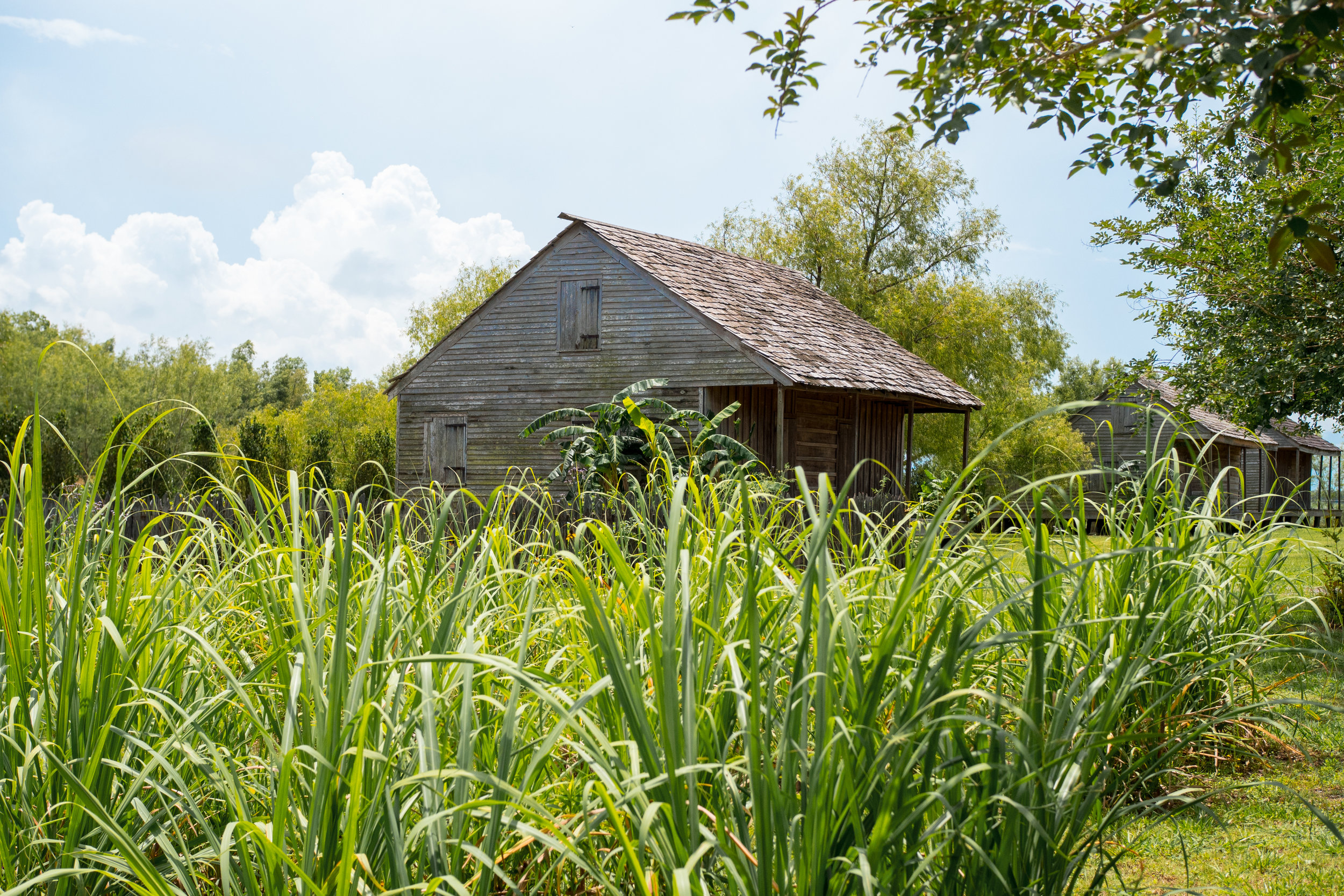In my K-12 years, I received a sub-par American history education. Through a series of unfortunate events, I graduated high school, without formally studying the Civil War. For this reason, I don’t think I understood the weight of slavery in the United States, particularly the slavery of Africans prior to the Civil War. Now, Louisiana’s history dates long before America’s purchase of the territory in 1803, so its history of slavery dates back to its initial colonization by the French. As the territory passed through French, Spanish, and American regimes, its rise to power was dependent on the sheer manpower of slaves. Born and raised in So-Cal, I used to think that the setting of the antebellum South was just that, a setting. Because I had never visited the Deep South, I never saw a plantation or a slave quarter or anything else related to slavery on a first-hand basis.
My understanding of the South was imaginary. How could I comprehend the lifestyle of a slave when I hadn’t experienced the sweat-nullifying humidity of Louisiana’s air? Or the swampy wasteland the slaves were expected to build plantations on? Or the physical separation that divided slaves from their masters? I couldn’t conjure up the reality of this place by trying to piece together nonfiction research and fictional exposition passages on the region. My whole perception and understanding of slavery and the plantation system changed upon my arrival in New Orleans.
It is clear that the scars of slavery still run deep in Louisiana, and it is impossible to avoid slavery while studying the region. All of the books we’ve been bookpacking with, touch on racial tension to some degree; they reveal a seemingly intrinsic conflict between Whites and Blacks from French colonization onward. For Anne Rice’s Interview with the Vampire, this conflict is portrayed within the context of the plantation system. The main character, Louis, owns an indigo plantation and, in turn, owns slaves. The dynamic between master and slave from Louis’s perspective is undermined by the novel’s focus on vampirism, but it is important to understand the context of life on a plantation. Just like Kate Chopin’s The Awakening, the setting of Pointe du Lac is important to experience in order to empathize with the background of Louis. Using Interview with the Vampire as our guide, we headed to the Whitney Plantation to garner a deeper understanding of the history of slavery and the plantation system.
I could read all about the history of slavery, find memoirs about the plantation lifestyle, calculate death rates of slaves in Southern Louisiana, or analyze photographs taken during the time; but none of these initiatives could prepare me for the ominous burden of walking through the slave quarters of the past. I imagined the work-crippled bodies of Africans, separated from their biological families, packed into these shacks that served as their homes, and it was powerful. I had a bit of a Will Hunting Moment.
Ali, our tour guide, commented on the illiteracy of slaves. He explained that their illiteracy did not mean they were stupid, they simply could not read and write the English language. The entire reason for the slave trade revolving around Africans was that they had desirable skills that appealed to the white slave owners of the time, so in fact, slaves were brought from Africa because they were extremely intelligent and skilled craftsmen. Interview with the Vampire touches on this topic a bit, as Louis explains, “I had several extremely intelligent slaves who might have done his job just as well a long time before, if I had recognized their intelligence and not feared their African appearance and manner” (Part I, Page 27). I think the novel undermines the importance of slaves to the plantation and the development of the grandeur of Southern Louisiana, but as I found out at the Whitney, most plantation owners would think the same thing. Ali did a wonderful job at explaining the systematic breakdown of the slaves that has created a trans-generational rift between White and Black culture in the New Orleans region, and books such as The Moviegoer and A Lesson Before Dying document this conflict into later eras of Louisiana’s history.
For me, learning about slavery and the historical conflicts of this country have been enlightening. I learned a lot about how the past has influenced the way racial relations work in the present. All of this new knowledge was only possible through the process of bookpacking. It was a different experience than bookpacking The Awakening, as that was more of an immersive learning experience, seeing and feeling and smelling the ocean that enthralls Edna. This time, Bookpacking led me to learn more about the contextual history of the Interview with the Vampire and further understand the region that we were traveling through. It showed me bookpacking is more than just taking books to places in order to understand the literature better; instead, bookpacking can implement literature as a guide to better understand the history and culture of a place.
“It was confusing, each sound running into the next sound, like the mingling reverberations of bells until I learned to separate the sounds, and then they overlapped, each soft but distinct, increasing but discrete”
Additionally, I wanted to somehow portray the heightened senses of Louis upon his vampiric transformation. I captured some audio at The Whitney, originally attempting to capture the perception of a plantation owner observing his/her property. However, Louis experiences his transformation in a similar setting as The Whitney. I used a combination of audio filters to recreate the aural transition Louis might have experienced upon garnering his new vampiric senses…






